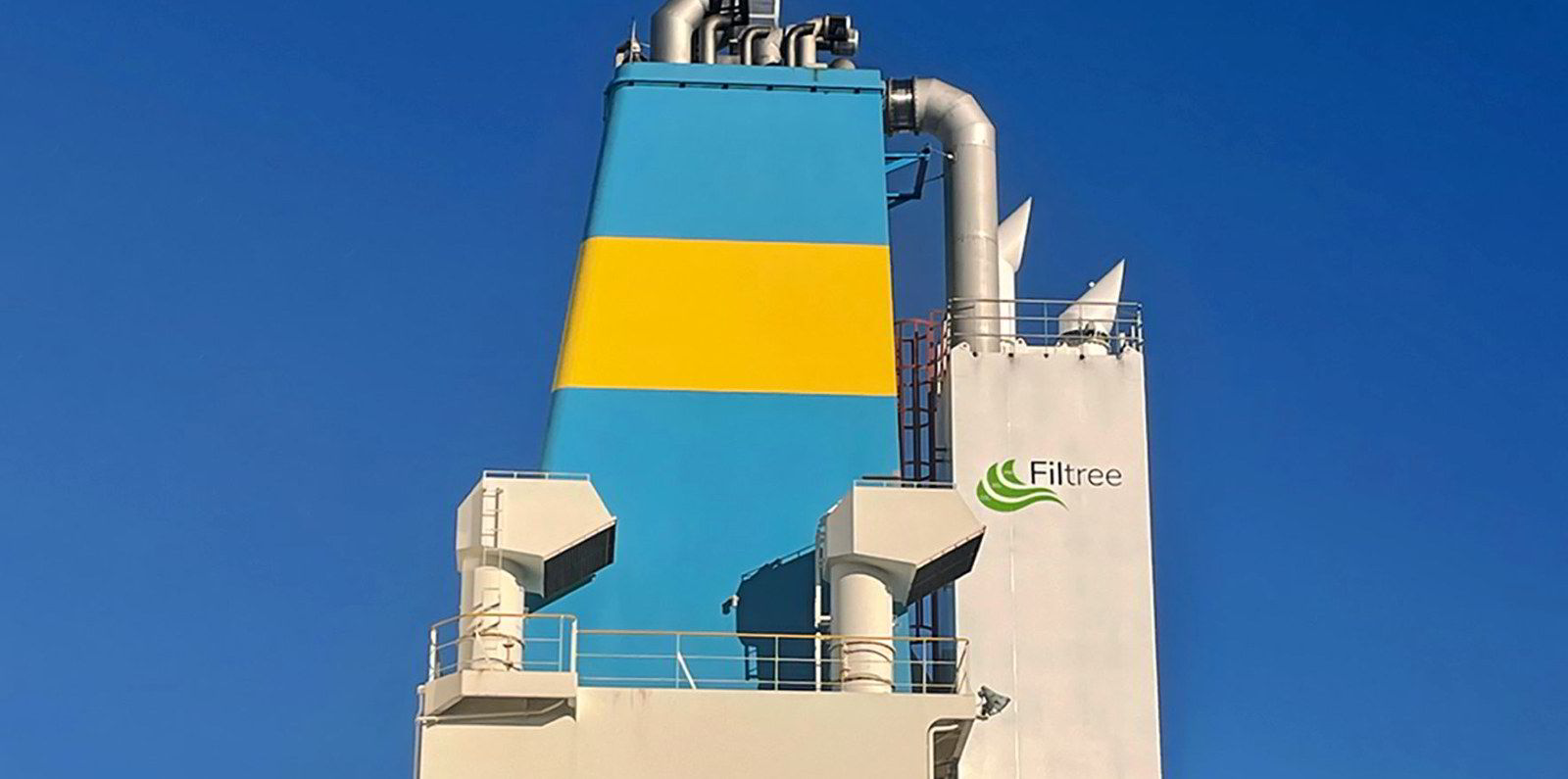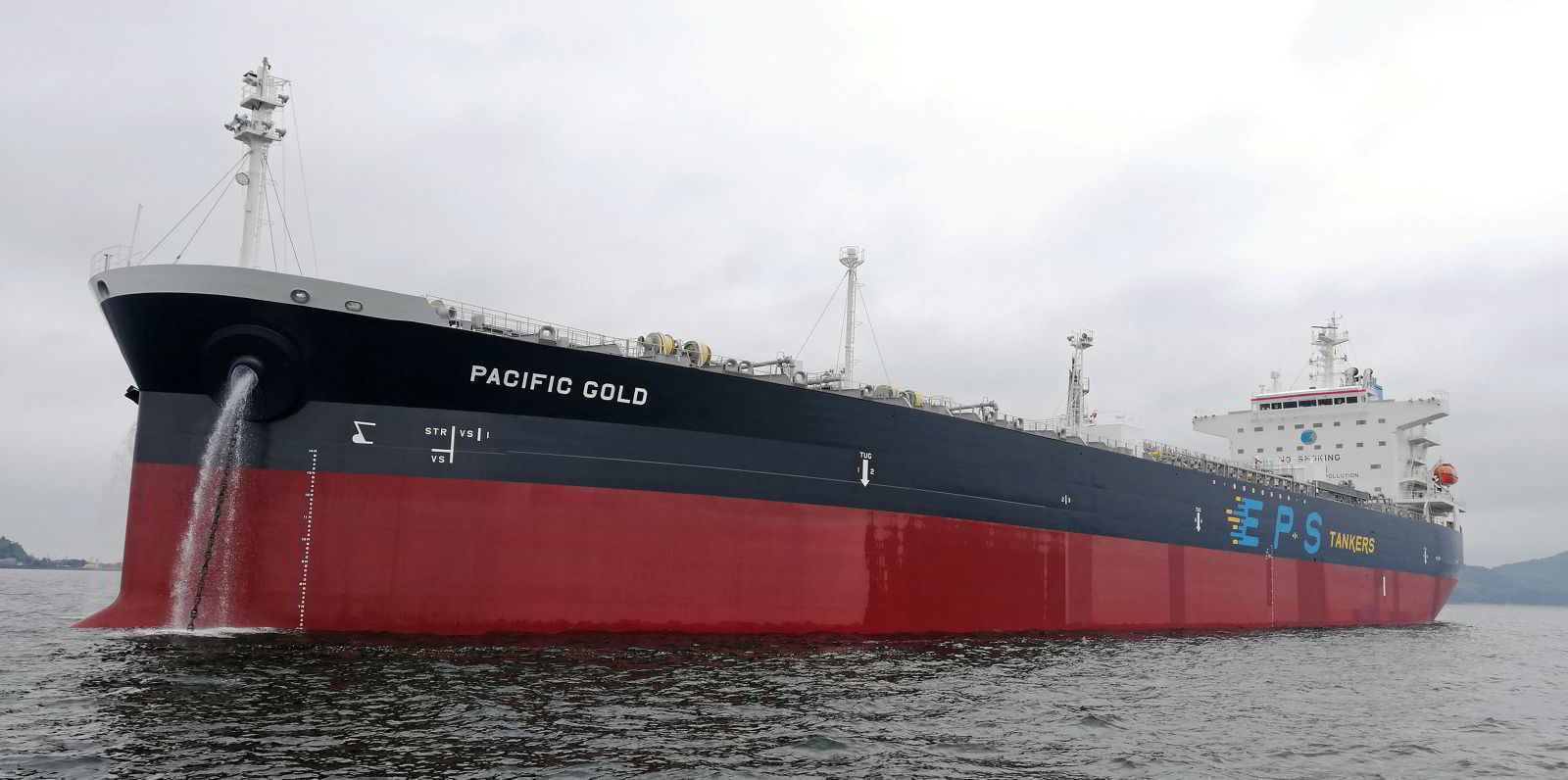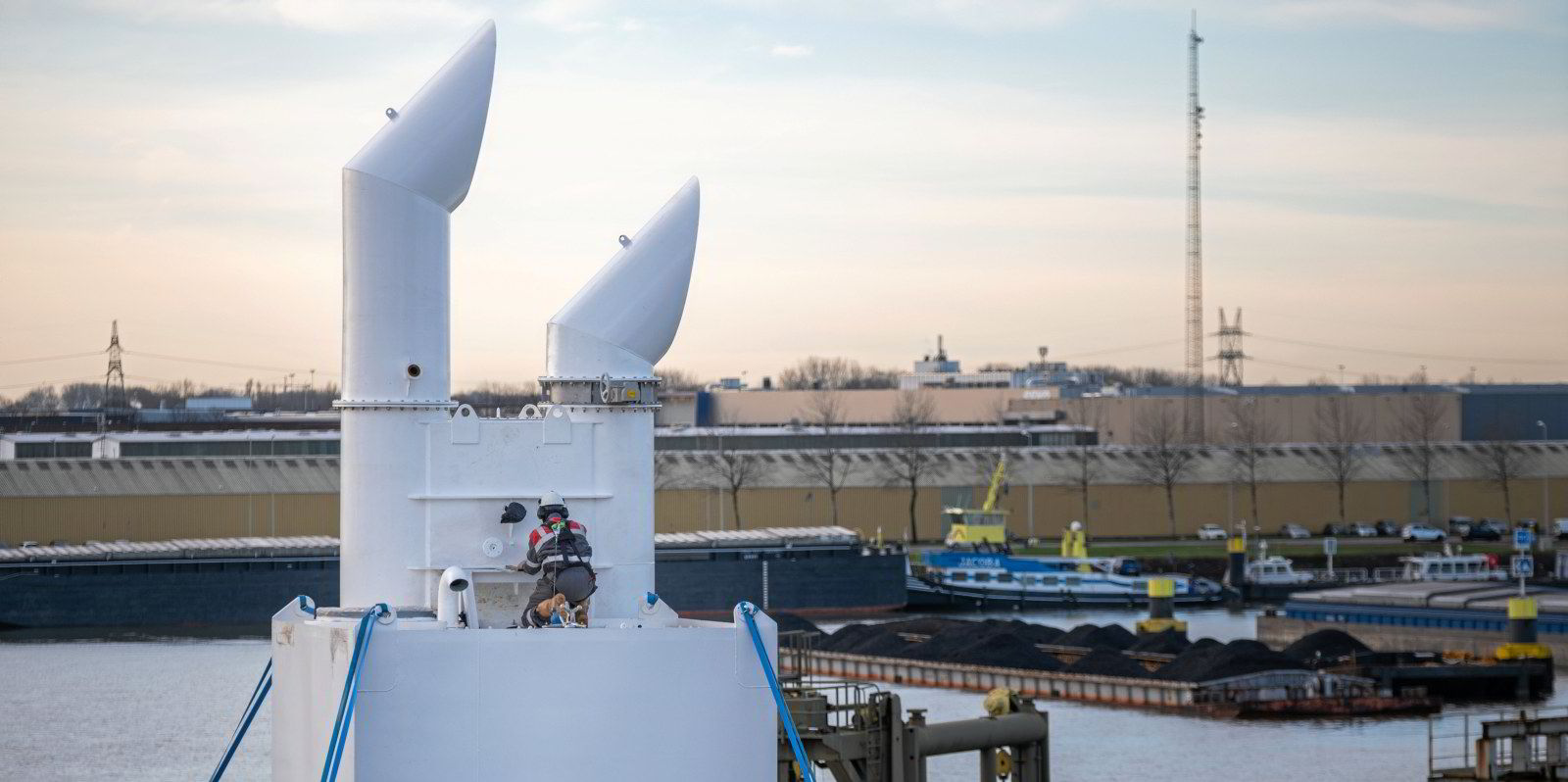Eastern Pacific Shipping (EPS) has completed the installation of carbon capture technology on a managed MR tanker that it hopes will cut the vessel’s CO2 emissions by 40%.
The device was installed aboard the 49,700-dwt Pacific Cobalt (built 2020) in a 17-day operation in Rotterdam, the Singapore-based shipowner told TradeWinds.
The technology was supplied by Rotterdam-based Value Maritime (VM) in an installation that is said to be a first for a vessel of this size.
VM’s Filtree system, which filters sulphur and 99% of particulate matter, includes VM’s carbon capture & storage (CCS) module that captures CO2 emissions from the vessel’s main and auxiliary engines.
EPS said the CO2 is captured in a special chemical that is stored in an onboard tank that during the retrofit has been recoated and converted for this purpose.
The shipowner said the tank now provides sufficient storage space to capture more than 200 tonnes of CO2 in a single voyage.
“Once the tank is full, the chemical will be pumped out in port and delivered to end users, such as greenhouses or synthetic fuel producers, who will be able to release the CO2 on demand,” EPS said.
“The CO2 can also be placed into carbon sequestration networks. The chemical will then be returned to the vessel for reuse and to capture more CO2.”
EPS chief executive Cyril Ducau said that if the shipping industry is to hit IMO 2050 and net zero targets, it needs to “start moving the needle significantly now”.
“To ensure that we are able to make a significant difference, we have been developing a portfolio of solutions across various vessel types,” he said.
“Advanced decarbonisation technology, like the CCS system from Value Maritime, offers a concrete solution that can be implemented on existing vessels.”
Ducau said the result is an “immediate carbon emission reduction” while removing the need to wait for the development and rationalisation of alternative green fuel infrastructure.
Value Maritime co-founder and director Maarten Lodewijk described EPS as “leading the charge” of shipping companies that have already started the transition to a greener fleet.
“Thanks to them, we have now succeeded in bringing our filtering and carbon capture technology to the tanker market,” he said.
“A special thanks should go to the installation team who completed this project within a narrow window and with the utmost professionalism.”





